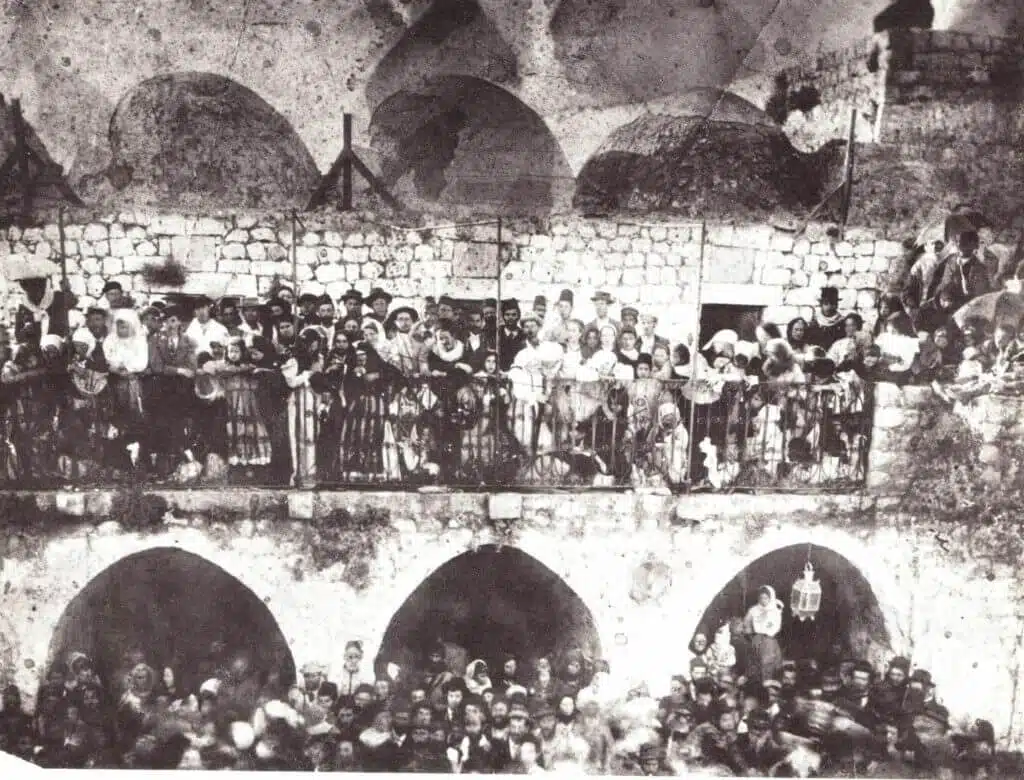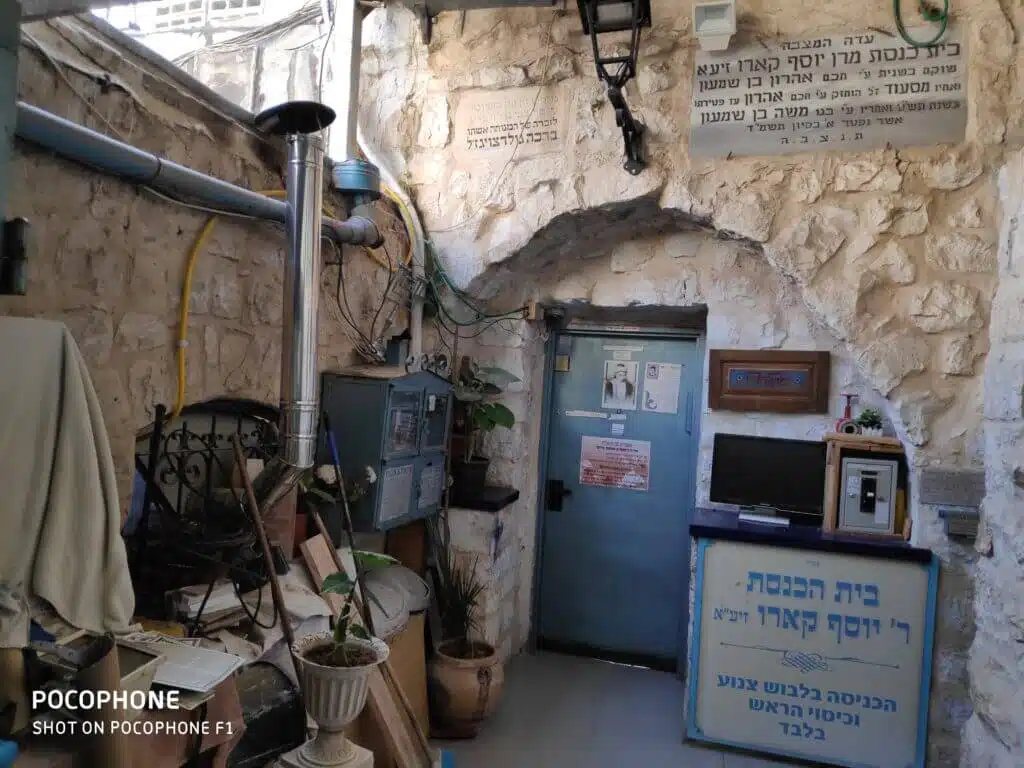Traditional religiosity and Kabbalistic ideas: Safed of the 16th century offers an alternative model of Jewish existence in the Land of Israel

"Our school trips did not include a visit to Safed," says Prof. Amnon Raz-Karkotskin, a researcher from the Department of History of the People of Israel at Ben-Gurion University of the Negev. "Apparently, this is a surprising choice: after all, the continuity of the settlement in the Land of Israel has an important place in the Israeli-Zionist historical consciousness. They make sure to bring generations of students to the nearby Paki'in, to explain that the Jewish settlement in the place has existed for more than two thousand years in a row. But Zefat - no. After all, they could have stopped the buses and told the students about the defining moment when a series of personalities who reshaped Judaism arrived in the city: Rabbi Yosef Karo, author of the Shulchan Aruch; The Kabbalists Rabbi Moshe Cordovro, the Hari and Rabbi Shlomo Alkabatz, the author of the poem 'Lacha Dodi'; And the bard Rabbi Yisrael Najara".
Even in the history classes of the people of Israel in universities, historical Safed does not occupy a significant place. "Zionist culture, following on from Western-modern Jewish culture," continues Prof. Raz-Karkotskin, "expressed an ambivalent attitude toward Safed, which embodied what was identified with the East: halachic stagnation and Kabbalah, which was defined as 'irrational delusions.' These are actually two opposing models of Judaism. The Zionist model turns to the Bible, especially the books of Joshua and Judges, and strives to recreate the occupation and settlement. David Ben-Gurion and Yigal Yedin saw themselves as clear successors of Yehoshua ben Nun, and the new settlement was based on the concept of settling on the land and identification with the messages of the prophets. Paradoxically, the return to the Bible was also an integration in the West, and grew against the background of the revival of the Bible in the modern West. On the other hand, the settlement in Safed, and following it the settlement in Israel and the old settlement as far as Zionism, is based on a return to the period of the Tanaim, the period after the destruction of the Temple, when the Mishna was written and according to tradition the book of the Zohar was handed down."
While Zionism goes back to the period before the destruction, and sees the present as a parallel process to the time of Joshua and the judges, albeit with reservation and ambiguity on the issue of the temple (to which the story leads) - in Safed the defining moment is precisely after the destruction. In Zionism, the people are the purpose of redemption, while in Safed, the people are the subject of redemption and have a role in repairing the breach in the divine system. The founding figure of the biblical model is Joshua; The founding figure of the Safed model is Rabbi Shimon bar Yochai.
Safed's worldview, based on the Zohar, creates a connection between the Mishna as a composition that stands on its own and the facet of God known as "Shekinah". According to Kabbalah, the Shekinah is identified with the count of "kingdoms", the low count that fell to the earth, and embodies the duality of kingship and exile. According to Ishii Safet's view, the role of the Kabbalists, and with them the role of the People of Israel, is to turn to the Shekinah and raise her up, and to renew her pairing with the higher masculine Sefirot, "Yisod" and "Tafarat".

The world of Safed is based on connection and mediation between the earthly worlds and the upper worlds, seeing them as one system. In this framework, an important place was recognized for the belief in reincarnation and connecting with the dead in order to obtain revelation. This is in contrast to the modern concept, in which the biblical model has been reconstituted. This view assumes a naturalistic world, which completely rejects a connection between the worlds.
We therefore have two competing approaches: the Zionist approach, according to which we are able to understand the Bible directly, without mediation, and in contrast the Tsafet approach, which turns to the Mishnah, the "Zohar" and Rabbi Shimon, in order to reach the Bible with the help of their mediation. The biblical model is closely related to the science of archaeology, which performs an invasive act of penetrating the earth; Whereas in Safed the echoes of the era remain on the surface of the earth and not within it, and in order to get close to them one must prostrate on the graves of Tanim.
The absence of Safed's heritage from the official Israeli memory is particularly striking in view of its founding role in the reshaping of the Jewish life framework later, both in Europe and in the Eastern countries. This is especially noticeable regarding Hasidism on the one hand and the culture of North African Jews on the other - but it is true for the entire Jewish world. Safed's heritage is distinctly present in the culture of many Israelis, including the public defined as "traditional". The rejection of Safed is at the root of the opposition to central elements in the culture of many Jews, such as the worship of martyrs and prostrating over graves. The negation of these foundations characterizes both secular Zionism and religious Zionism, and in this sense, they are closer to each other than either of them is close to the Safed model.
Compared to the conventional view, which fully identifies modernity with the values of the West, Prof. Raz-Karkotskin offers an examination of modernity based on two points of view: that of Safed, and the later view based on the negation of Safed.
Such a move has several advantages: First, while modern historiography accepts the West as a point of departure, and examines the history of the Jews mainly as the history of the Jews of Europe, Safed offers a broader and more inclusive framework. A history that begins in the Land of Israel creates a time frame and culture that includes both East and West, and challenges the accepted distinctions between "modern" and "traditional". In addition, it offers us a framework for a critical examination of the consciousness of the present, in a way that points to denied foundations. And finally, such a historical view makes it possible to see traditional Eastern Judaism not only according to the extent of its compatibility with the concept of European modernity.
Life itself:
Prof. Raz-Karkotskin likes to read history books and spend time with his family.
